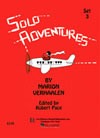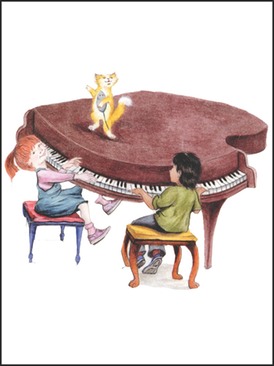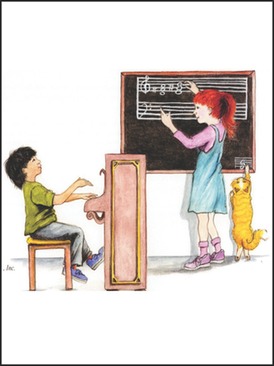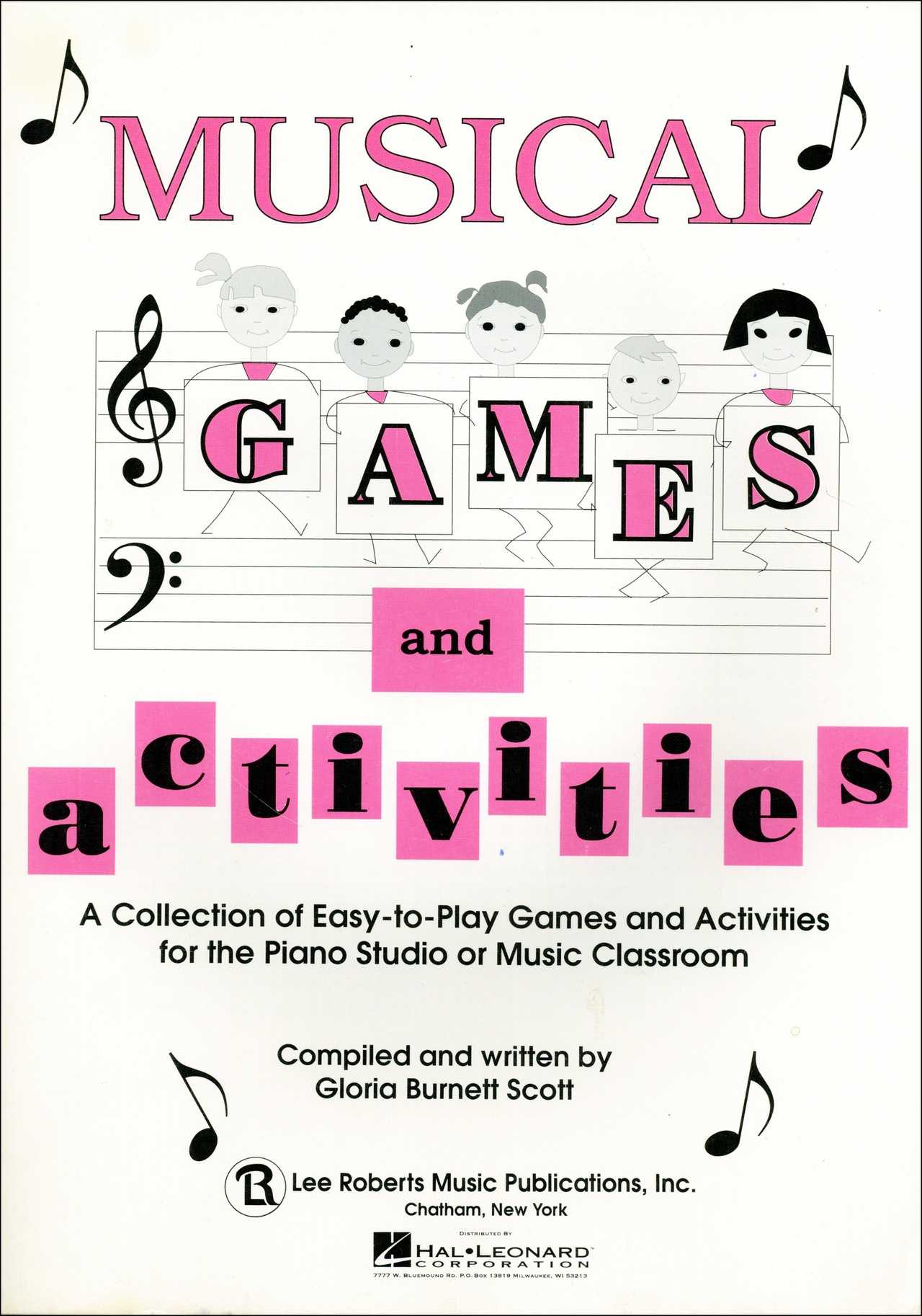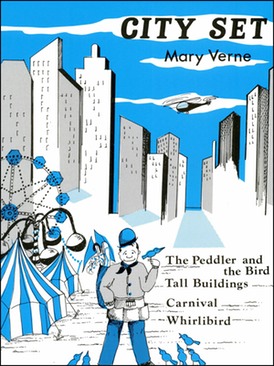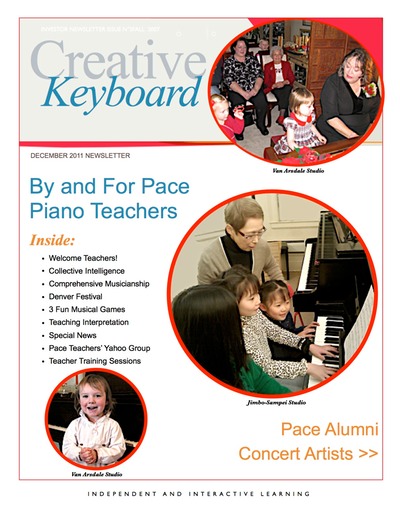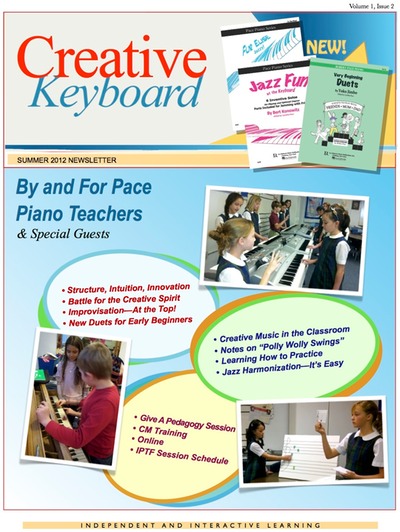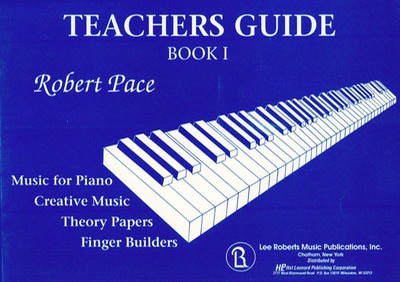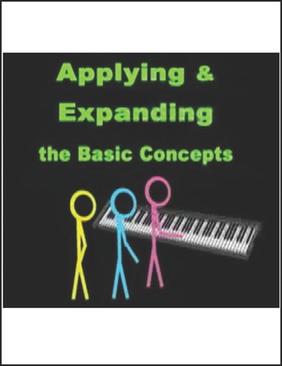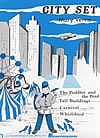By Dr. Marion Verhaalen
(Mary Verne)
![]() Hear Mp3 Sample: Tall Buildings / Peddler & the Bird / Carnival / Whirlibird
Hear Mp3 Sample: Tall Buildings / Peddler & the Bird / Carnival / Whirlibird
Students love the four musical "cityscapes" in City Set. Here are some "Building Blocks" for students to discover and explore:
The Peddler and the Bird: Short, easy patterns, plus simple pedal indications, make this piece a favorite for beginners. Students enjoy portraying the piece's peddler (m. 1, etc.) and bird (m. 3, etc.) motifs. Peddler and
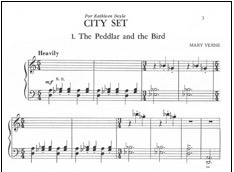
the Bird is easy to learn, when students discover that the entire composition is created from only two intervals ‑‑ fifths in the left hand on D an on E‑flat, and thirds in the right hand on G‑flat. Ask students to look for repeated figures and register-changes in this bitonal composition. To encourage students' interpretive skills, discuss possible reasons for the indications of decrescendo and "slower," found in the piece's closing. With the alternating 5/4‑3/4 meter, most students find it easiest to count: "quar ‑ ter quar ‑ ter," etc. on each beat, including rests. When the left hand plays alone (m's. 9 - 12), they may say "h‑a‑l‑f—n‑o‑t‑e—d‑o‑t." Alternately, some students may count: "left ‑ right ‑ right ‑ left ‑ right" and then "I‑e‑f‑t—t‑w‑o—t‑h‑r‑e‑e."
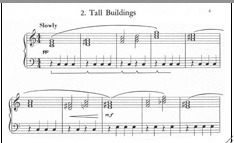 Tall Buildings: Major chords played by the right hand in legato phrases over a left hand pedal point depict tall buildings, from ground to sky, in this effective A ‑ B ‑ A composition. Help students discover elements, such as ascending and descending figures, and increasing and decreasing dynamics, that contribute to images of buildings and awe-inspiring "tallness." Guide students to discover:
Tall Buildings: Major chords played by the right hand in legato phrases over a left hand pedal point depict tall buildings, from ground to sky, in this effective A ‑ B ‑ A composition. Help students discover elements, such as ascending and descending figures, and increasing and decreasing dynamics, that contribute to images of buildings and awe-inspiring "tallness." Guide students to discover:
• Section A. m's 1- 7: Gradual PP to MF crescendo; C pedal point; ascending phrase in opening.
• Section B. m's 8-11: Left hand ascent to E pedal point increases tension;
m's 10-11 repeat m's 8-9, with final chord of m. 11 moving a half step
above that of m. 9; rising register of m's 10-13 implies a crescendo.
• Section A, m's 12-22: Opening theme stated one octave higher (m's 12-13).
Register and dynamics wind down in final line.
When students apply pedal, they may be reminded to lift and then pedal at the point at which they actually hear each new chord.
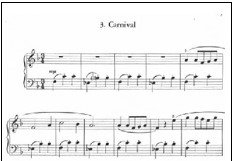 Carnival: This moderately challenging, but delightful, piece features a quick-moving legato right hand and ostinato waltz bass. The bass pattern's slurred note pair followed by a staccato note implies that second and third beats should be lighter than downbeats. Encourage students to find repeating and sequential figures (sequences, of course, being like patterns on different tones). Ask students to identify bitonal measures where the right hand plays C major (m's. 10-13) against the left hand's F and E-flat fifths, creating an "out of tune," merry-go-round-music effect. For those ready to use the metronome, starting out with a slow eighth-note setting, hands alone and then together, will help in gradually building up a lively performance tempo.
Carnival: This moderately challenging, but delightful, piece features a quick-moving legato right hand and ostinato waltz bass. The bass pattern's slurred note pair followed by a staccato note implies that second and third beats should be lighter than downbeats. Encourage students to find repeating and sequential figures (sequences, of course, being like patterns on different tones). Ask students to identify bitonal measures where the right hand plays C major (m's. 10-13) against the left hand's F and E-flat fifths, creating an "out of tune," merry-go-round-music effect. For those ready to use the metronome, starting out with a slow eighth-note setting, hands alone and then together, will help in gradually building up a lively performance tempo.
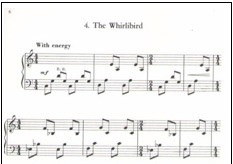 The Whirlibird: In this bitonal impression of a helicopter, right and left hands play broken fifths that move around C and then away, to cadence, finally, on D. Ask students to play fifths in "block" (harmonic) instead of broken (melodic) form, at first, so they may see how both thumbs share the same tone, as the right and left hands ascend and descend together, in m's 1-8. Students should also observe that, from m. 9 to the end, the hands move in independent directions. Let them note, for instance, the contrary motion in the last line. As with Carnival, a metronome set to eighths, and later, quarters, can be beneficial for building up the tempo of this 4/4-2/4 piece.
The Whirlibird: In this bitonal impression of a helicopter, right and left hands play broken fifths that move around C and then away, to cadence, finally, on D. Ask students to play fifths in "block" (harmonic) instead of broken (melodic) form, at first, so they may see how both thumbs share the same tone, as the right and left hands ascend and descend together, in m's 1-8. Students should also observe that, from m. 9 to the end, the hands move in independent directions. Let them note, for instance, the contrary motion in the last line. As with Carnival, a metronome set to eighths, and later, quarters, can be beneficial for building up the tempo of this 4/4-2/4 piece.
Creativity: As with each piece in the Pace Recital Series, students will enjoy using the structures of these pieces as a departure point for creating their own new music.
Excerpted from TEACHING TIPS, by Dr. Cynthia Pace. © All Rights Reserved.








